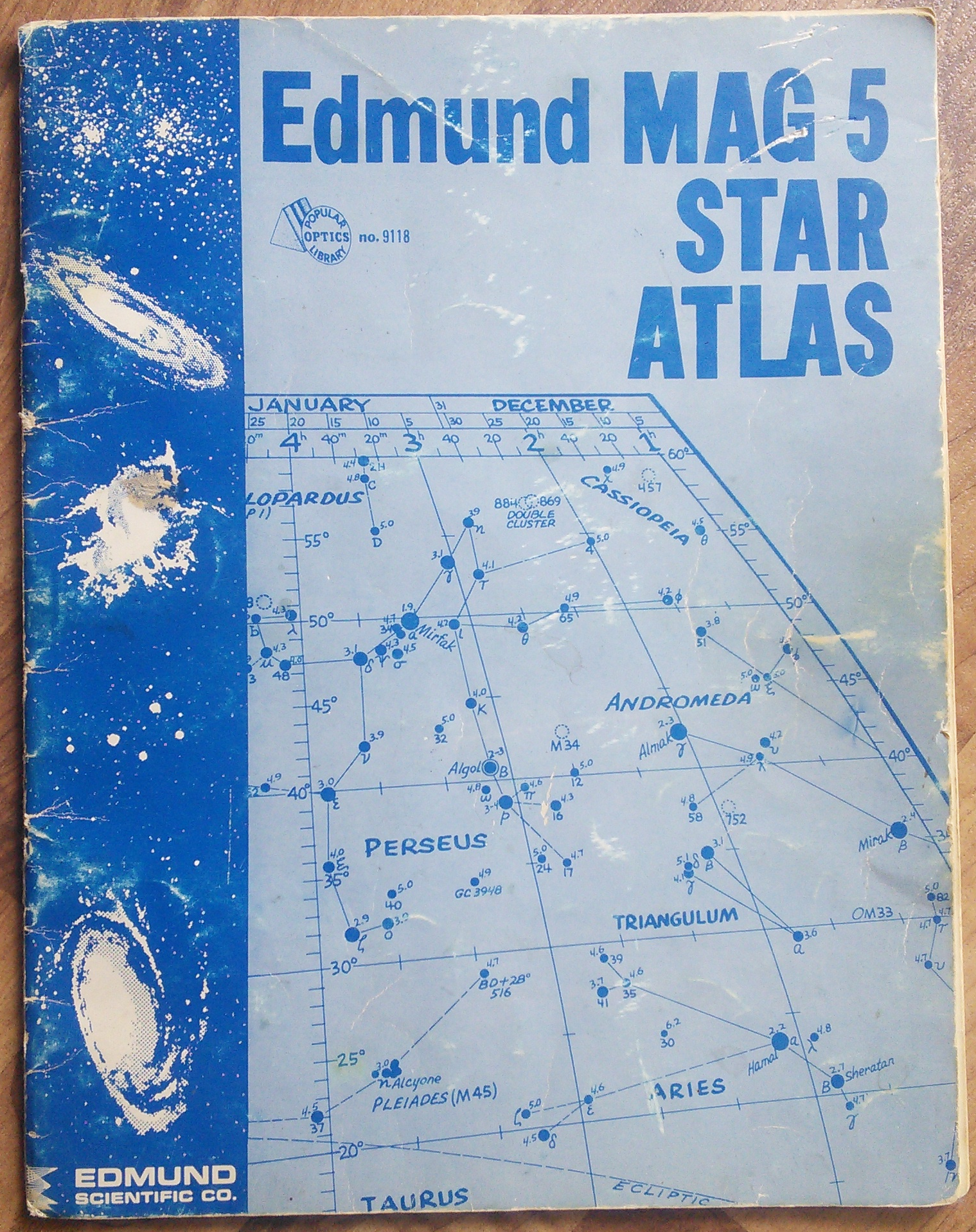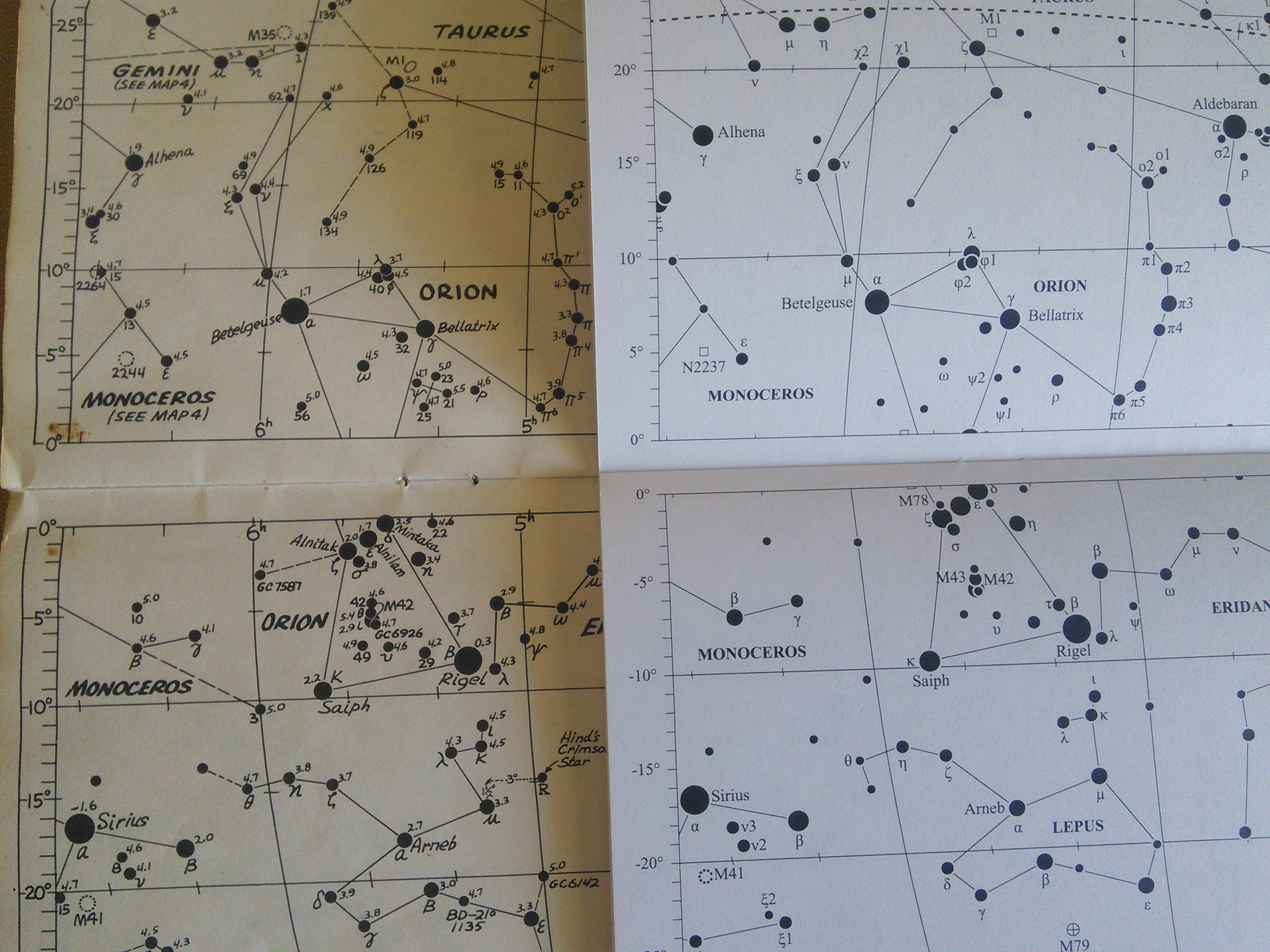Learn The Constellations
This project generates a simple, free star atlas as a PDF.
The atlas is designed for the sole purpose of teaching the constellations.
It was inspired by the Edmund Mag 5 Star Atlas.
The source code is here.
Edmund Mag 5 Star Atlas
The Edmund Mag 5 Star Atlas was extraordinarily well-designed for learning the constellations.
Written by Sam Brown, it was first published in 1974, and is now long out of print.
Though humble in appearance, it was nearly perfect for the task.
When I was young, I found it difficult to learn the night sky.
That all changed the first night I tried the Edmund Atlas, when it opened up a whole new world to my eyes.

Out of love for the Edmund Atlas, and for the guidance it gave me long ago in discovering the immutable beauty of the night sky,
I've created a simple set of original charts.
These charts are designed with a single goal: to teach people the constellations effectively.
The charts are not useful for experienced deep sky observers.
The charts are generated from the Yale Bright Star catalog, using the Java programming language.
Here's a quick visual comparison of the Edmund Mag 5 Star Atlas (left, yellowed with age) with mine (right):

PDF file and cover image
In general format, my charts resemble those found in the Edmund Mag 5 Star Atlas, but they aren't exact copies.
The chart is made of two files:
- the main body PDF file, with pages 8.5 x 11 inches (use the most recent version).
- a cover image (optional). Use the 300dpi versions for printing.
Options for printing
There are 3 options for printing the charts:
- if you have a printer, you can print it at home (with no cover), using the PDF link above.
- print at the local print shop (cost: $5-$6). Ask for 8.5 x 11 inches, double-sided. Give them both the main file and the cover file (300dpi version).
I find that a simple staple-binding works fine, and is the least expensive. A coil binding usually costs more.
A slightly heavier paper than normal will remove the see-through aspect of lighter paper.
- print it (soft cover) using lulu.com, a print-on-demand service,
where I have uploaded the files (cost: a little over $10, shipping varies). You pay only for the cost of production and
shipping. I don't make any money from the transaction.
Equally good for north and south
My charts are unusual because they are duplicated, first with a bias for observers in the northern hemisphere (charts 1-6),
and then with a bias for observers in the southern hemisphere (charts 7-12), in which the labels are printed "upside down".
I thought it would be nice to be polite to the poor people in the southern hemisphere for a change,
who usually have to put up with a northern bias.
Custom versions
If you like these charts, it's possible to generate a custom version for you or your astronomy group, by changing the programming code that generates it.
For example, the title and cover image could be changed to suit your taste, with minimal effort, if you know how to program.
You could then use such charts when interacting with the general public, for example.
If you would like a custom version, but don't know how to program, then send me a request through
email or
github,
and I'll see what I can do. If there aren't too many changes needed, then it should be quick.
The simplest case is to change only the title-page and cover.


